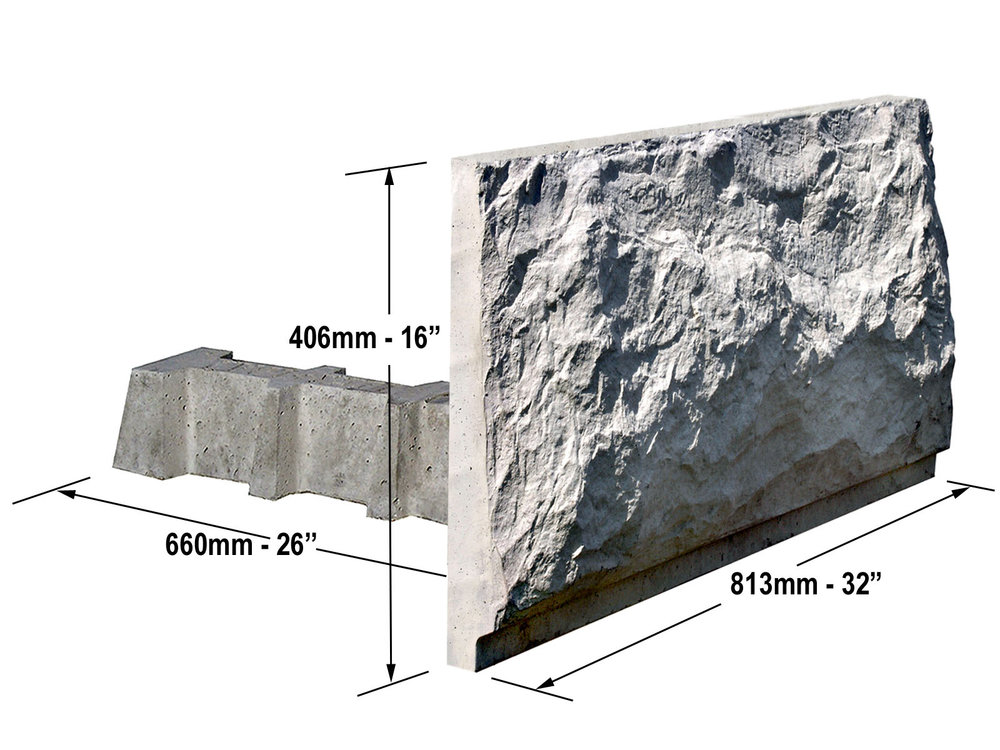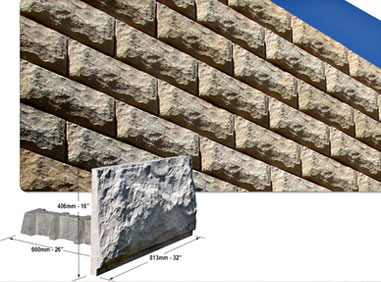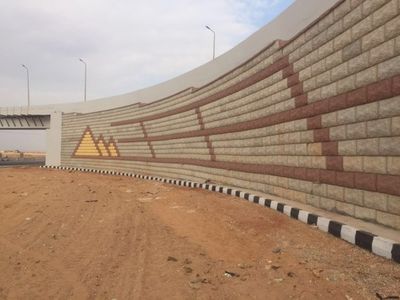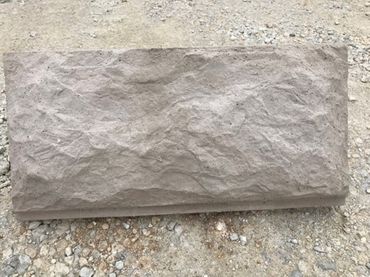LOCK + LOAD Characteristics
LOCK+LOAD is comprised of two pieces; a panel, and a counterfort that are assembled into a "Modular Cantilever".
The LOCK+LOAD module has a face area of 3.5 square feet and is the largest manually installed retaining wall product on the market.


LOCK+LOAD is used by itself for retaining walls in the four foot high range.

LOCK+LOAD has been utilized extensively in mechanically stabilized earth walls.

LOCK+LOAD elements are wet cast from 5500psi polyfiber steel reinforced concrete.
Strength of Panel
LOCK+LOAD tests the product by pulling the panel into the soil mass using the counterfort to test loop embedment strength. The steel connection loops pull out of the concrete panel at a value of ~6000 lbs and provides a 75 year design life, using standard AASHTO corrosion criteria for the connecting steel. Standard LOCK+LOAD products have been tested and certified lab test reports are available upon request.
Strength of Counterfort (panel soil reinforcement)
The counterfort is embedded into the compacted fill, immediately behind the face panel. LOCK+LOAD has tested the embedment of the counterfort with various different confining stresses. The fill in the counterfort zone is currently specified as clean crushed rock compacted to a specific performance specification. Tests show that the counterfort pullout resistance develops over 6 times faster than the driving forces thus ensuring a large safety factor for counterfort connection to the soil mass. These tests are also available upon request.
Connection Strength of Primary Soil Reinforcement
The final connection consideration is the connection of the primary soil reinforcement (grid, wire mat, etc.) into the zone of backfill overlapping the counterfort. Since this is the crushed rock zone these connection values can be easily calculated from the Ci (coefficient of interaction) values provided by reinforcement manufactures. To verify these calculated values LOCK+LOAD has test data from several combinations of primary soil reinforcement types and manufacturers. In all cases the tested capacities exceed the calculated connection capacities.





